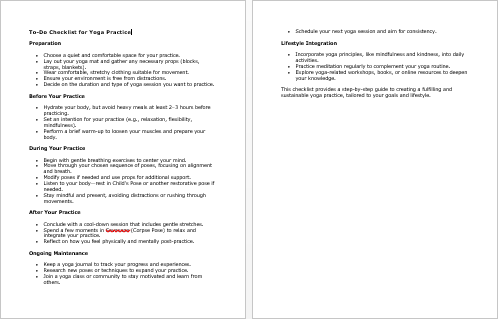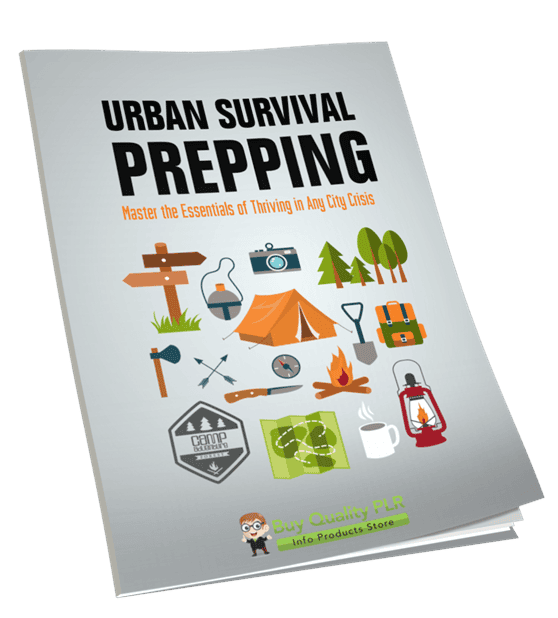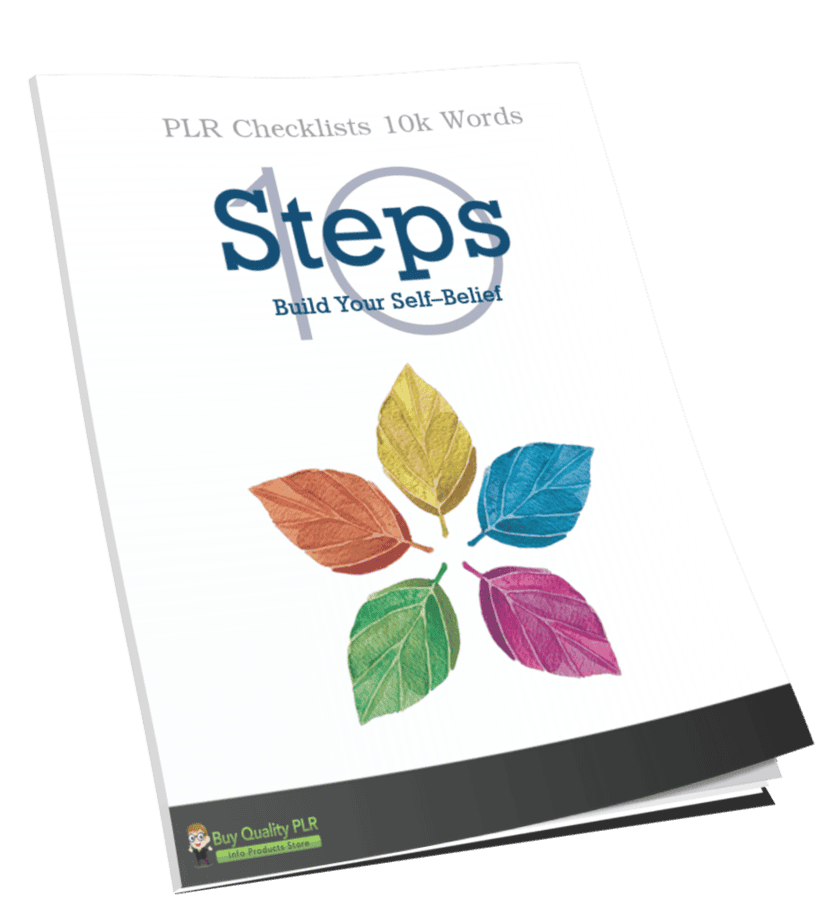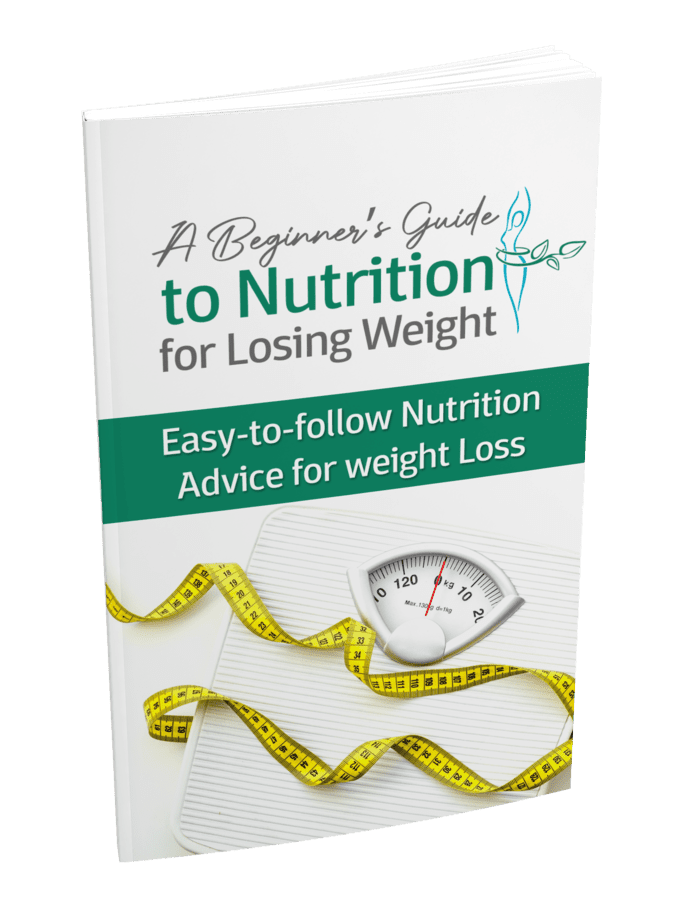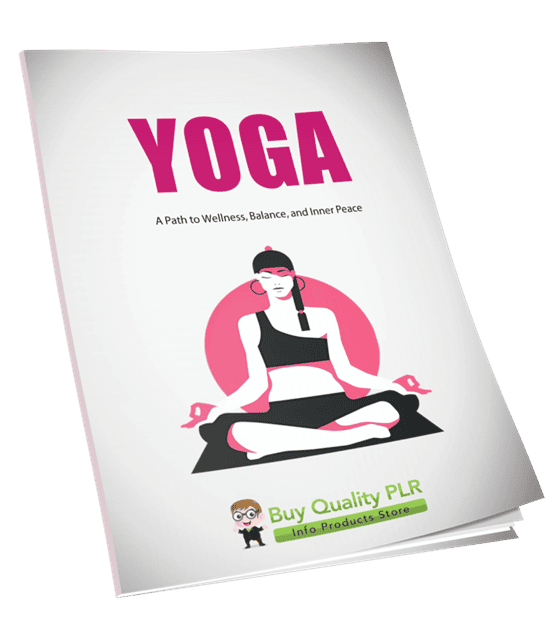
Yoga PLR Course 24k Words
in Exercise PLR , Fitness PLR , Fitness PLR Ebooks , PLR Checklists , PLR eBooks , PLR eCourses , PLR List Building Reports , Premium PLR , Premium PLR eBooks , Premium PLR Packages , Premium PLR Reports , Premium White Label Brandable PLR Coaching Courses , Private Label Rights Products , Yoga PLR , Yoga PLR EbooksChoose Your Desired Option(s)
has been added to your cart!
have been added to your cart!
#yoga #yogaplr #privatelabelrights #yogacontent #wellnessmarketing #healthandwellnessplr #plrproducts #mindbodywellness
Yoga PLR Course: A Path to Wellness, Balance, and Inner Peace
Are you ready to share the transformative power of Yoga with others? With the Yoga PLR Course, you can empower individuals to improve their physical health, emotional well-being, and mental clarity through the art of yoga. Whether your audience is new to yoga or looking to deepen their practice, this 22,175-word course is the ultimate resource to guide them every step of the way.
This step-by-step training course will teach individuals the foundations of yoga, from understanding the basics and breathing techniques to developing a lifelong practice. Perfect for online course creators, fitness coaches, or wellness bloggers, this PLR product allows you to offer high-quality yoga content that can help your audience find balance, peace, and strength in their lives.
Presenting…
Yoga PLR Course 24k Words
Course Overview: Yoga – A Path to Wellness and Balance
The Yoga PLR Course is structured into five modules, each designed to guide your students from beginner to advanced levels. Every module is full of actionable steps, useful tips, and a blend of theory and practice, making yoga accessible for everyone.
Module 1: Understanding the Basics of Yoga
Start your yoga journey with the foundations. This module provides a solid introduction to yoga, its history, and its benefits.
- Step 1: What is Yoga?
Discover the ancient origins of yoga and how it connects the mind, body, and soul. Learn why yoga is more than just poses and how it’s relevant in today’s modern world. - Step 2: Benefits of Yoga
Understand the numerous benefits yoga can provide, from improving flexibility and reducing stress to boosting mental clarity and promoting overall health. - Step 3: Types of Yoga
Explore different styles of yoga, including Hatha, Vinyasa, Ashtanga, and Yin yoga, and learn which style suits your goals and energy levels. - Step 4: Preparing for Practice
Learn what to bring to your first class, from yoga mats to clothing, and set your mindset for a positive experience.
Module 2: Building a Foundation
Master the foundational techniques that will serve as the bedrock of your practice.
- Step 1: Breathing Techniques (Pranayama)
Explore the power of breathwork to calm your mind and enhance your focus, using simple and effective pranayama techniques. - Step 2: Warm-Up Poses
Engage in gentle stretches like Cat-Cow and Child’s Pose to prepare your body for deeper yoga poses. - Step 3: Basic Standing Poses
Learn foundational standing poses such as Mountain Pose and Warrior Pose to build strength, stability, and grounding. - Step 4: Relaxation Techniques
Conclude your practice with a guided relaxation, helping to integrate the benefits of your practice and promote a sense of calm.
Module 3: Developing Your Practice
As your yoga journey progresses, explore more dynamic movements and deepen your practice.
- Step 1: Sun Salutations
Begin your day with the energizing sequence of Sun Salutations to activate and strengthen your body. - Step 2: Balance Poses
Challenge your focus and stability with poses like Tree Pose and Dancer Pose, which will enhance your core strength and balance. - Step 3: Core Strengthening Poses
Strengthen your core with poses such as Plank Pose and Boat Pose, which will help you build a strong foundation. - Step 4: Cool-Down Stretches
End your practice with gentle stretches to relax your muscles and restore balance to your body.
Module 4: Exploring the Mind-Body Connection
Yoga is more than physical exercise; it’s about cultivating a mindful and balanced lifestyle.
- Step 1: Mindfulness in Yoga
Learn to incorporate mindfulness into your poses, bringing awareness to each movement and breath. - Step 2: Introduction to Meditation
Pair your practice with a simple 5-minute meditation to clear your mind and enhance your mental focus. - Step 3: Using Affirmations
Combine affirmations with your poses to uplift your mindset and create positive energy within. - Step 4: Journaling Your Experience
Document your journey and reflect on your growth in both your practice and mindset.
Module 5: Sustaining a Lifelong Practice
Yoga is a lifelong journey of growth and self-discovery. This module shows you how to build and maintain a sustainable yoga practice.
- Step 1: Creating a Home Practice
Design a personal yoga space at home and create a routine that fits into your lifestyle. - Step 2: Setting Goals for Growth
Identify specific goals for your practice, such as mastering a difficult pose or improving flexibility. - Step 3: Staying Motivated
Discover strategies for maintaining inspiration, such as joining a yoga community, attending workshops, and celebrating small milestones. - Step 4: Embracing Yoga Off the Mat
Learn how to apply the principles of yoga—such as mindfulness, kindness, and balance—in your everyday life.
Bonus Materials to Enhance Your Offer
The Yoga PLR Course also includes bonus materials to help you better market and sell the course:
- Yoga – Checklist (281 words): A helpful checklist to guide learners through the essential steps in starting their yoga journey.
- Yoga – FAQs (1,171 words): A comprehensive FAQ section that answers common questions and provides clarity on yoga practices.
- Yoga – Salespage (628 words): A pre-written, professionally designed sales page that you can use to promote the course and convert visitors into buyers.
How to Profit from the Yoga PLR Course
This Yoga PLR Course offers multiple ways to monetize and grow your business. Here are several creative ways to profit:
1. Sell the Course as a Standalone Product
You can sell the Yoga PLR Course directly on your website or through platforms like Teachable, Udemy, or Gumroad for $47–$97, depending on how you market the value.
2. Break the Course Into Smaller Modules
Turn the course into smaller, bite-sized reports or mini-courses and sell them individually for $10-$20 each. This model allows you to target customers who want to start with a lower investment.
3. Bundle the Course with Other Wellness Products
Combine the Yoga PLR Course with other related products, such as meditation guides or healthy living ebooks, and sell the bundle for $97–$197 for a more comprehensive wellness offering.
4. Set Up a Membership Site
Create a membership site where customers pay a recurring fee for access to the full course, ongoing updates, and additional yoga-related resources. This creates a steady stream of passive income.
5. Convert Into Video or Audio Content
Repurpose the course into video lessons or audio tracks, and offer them as a more engaging, multimedia learning experience. You can charge more for these formats—$297–$497.
6. Use as a Lead Magnet
Offer parts of the course for free in exchange for email sign-ups, helping you grow your email list and eventually sell the full course or other products.
7. Create a Physical Product
You can turn the course content into a physical workbook or yoga guidebook and sell it at a premium price for customers who prefer tangible materials.
What You Can Do with This PLR Course:
Permissions – What Can You Do With These Materials?
- Sell the course as-is or with minor tweaks to make it your own.
- Break the course into smaller reports or mini-courses for $10-$20 each.
- Bundle the course with other wellness-related PLR products and sell for $97–$197.
- Set up a membership site and charge recurring fees.
- Convert the course into video lessons, audio series, or physical products.
- Use portions of the course as lead magnets to grow your email list.
- Repurpose the content into social media posts, webinars, or blog posts.
Restrictions – What Can’t You Do With These Materials?
- You cannot pass on PLR rights to your customers.
- You cannot offer 100% affiliate commissions.
- You cannot give away the entire course for free in its current state; it must be sold or excerpted/modified for giveaways.
- You cannot add the course to existing customer orders without requiring an additional purchase.
Start Sharing the Benefits of Yoga with the World Today!
The Yoga PLR Course is your key to creating a successful wellness-focused business, whether you’re selling the course directly, offering it as a lead magnet, or creating a membership site. With this comprehensive yoga training, you’ll be able to help others transform their lives while building a profitable digital product business.
Get started today and begin sharing the transformative benefits of yoga with your audience!
has been added to your cart!
have been added to your cart!
Here A Sample of Yoga PLR Course
Module 1: Understanding the Basics of Yoga
Step 1: What is Yoga?
Yoga is an ancient practice that has grown into a global phenomenon, encompassing physical, mental, and spiritual dimensions. To truly understand yoga, we must delve into its history, philosophy, and deeper meaning. This step-by-step guide will help you grasp yoga’s roots and its relevance in the modern world.
1. Understanding the Historical Roots of Yoga
Yoga originated in India over 5,000 years ago and is deeply connected to the cultural and spiritual traditions of the region. The earliest references to yoga are found in the ancient texts of the Vedas, specifically the Rigveda. These texts were spiritual hymns that provided guidelines for rituals, meditation, and self-discipline.
- The Pre-Classical Period: The Upanishads (800–200 BCE) expanded the concept of yoga, describing it as a way to unite the self with the universal consciousness. This marked yoga as a path to inner knowledge and enlightenment.
- The Classical Period: Around 200 BCE, the sage Patanjali compiled the Yoga Sutras, a foundational text that organized yoga into eight distinct paths, collectively called Ashtanga Yoga. This systematic approach emphasized ethics, meditation, and posture.
- The Post-Classical Period: Yoga evolved into a practice that included physical disciplines (asanas) to maintain health and vitality, blending with the rise of Tantra and Hatha yoga traditions.
- Modern Yoga: In the late 19th and early 20th centuries, yoga gained global recognition. Pioneers like Swami Vivekananda and T. Krishnamacharya introduced yoga to Western audiences, blending tradition with innovation.
Key Takeaway:
Yoga is not just an exercise regimen—it is a cultural and historical practice rooted in ancient wisdom and continuously evolving to meet the needs of each generation.
2. Exploring the Philosophy of Yoga
At its core, yoga is a Sanskrit word meaning “union” or “yoke.” It represents the integration of body, mind, and spirit, aiming to harmonize an individual with their surroundings and inner self.
- The Eight Limbs of Yoga: Patanjali’s Yoga Sutras describe eight interconnected aspects of yoga, guiding practitioners toward self-mastery and enlightenment. These are:
- Yamas (Ethical Principles): Non-violence, truthfulness, non-stealing, moderation, and non-possessiveness.
- Niyamas (Personal Disciplines): Cleanliness, contentment, self-discipline, self-study, and surrender to the higher power.
- Asanas (Physical Poses): Designed to strengthen and align the body, preparing it for meditation.
- Pranayama (Breath Control): Techniques to regulate energy and focus the mind.
- Pratyahara (Withdrawal of Senses): Turning inward to control distractions.
- Dharana (Concentration): Developing focus on a single point or object.
- Dhyana (Meditation): A continuous flow of concentration and mindfulness.
- Samadhi (Blissful Absorption): A state of union with universal consciousness.
- Yamas (Ethical Principles): Non-violence, truthfulness, non-stealing, moderation, and non-possessiveness.
- Holistic Practice: Yoga is not limited to physical poses; it is a spiritual journey that includes mindfulness, discipline, and compassion.
Key Takeaway:
The philosophy of yoga teaches us to live harmoniously with ourselves and the world, focusing on growth and self-realization.
3. The Meaning and Essence of Yoga
Yoga is often misunderstood as merely a fitness routine, but its essence goes far deeper. It is a way of living that promotes physical health, mental clarity, and spiritual growth.
- Physical Dimension: Yoga strengthens the body, increases flexibility, and improves posture. Through poses like the Warrior or Child’s Pose, yoga fosters physical vitality.
- Mental Dimension: Yoga calms the mind, reduces stress, and enhances focus through breathing exercises and meditation. Techniques like Pranayama help regulate emotions and sharpen concentration.
- Spiritual Dimension: By practicing mindfulness and self-awareness, yoga bridges the gap between the individual and the universe, fostering a sense of unity.
Key Takeaway:
Yoga’s holistic approach makes it a powerful tool for achieving balance and well-being in every aspect of life.
4. The Relevance of Yoga in Modern Life
Yoga has adapted beautifully to the needs of contemporary life, making it accessible to people of all ages, cultures, and fitness levels. In today’s fast-paced world, yoga offers tools to counter stress, anxiety, and physical inactivity.
- Stress Management: Regular yoga practice reduces cortisol levels and promotes relaxation, making it a valuable tool for mental health.
- Inclusivity: Yoga is adaptable. Whether you’re a beginner or advanced, young or old, there’s a style of yoga that suits your lifestyle.
- Global Impact: Yoga is now practiced worldwide, celebrated annually on International Yoga Day (June 21). It’s integrated into workplaces, schools, and wellness programs to enhance productivity and well-being.
- Mindful Living: Yoga encourages living in the present moment, cultivating gratitude, and embracing a mindful approach to daily activities.
Key Takeaway:
Yoga is more than a trend; it’s a lifestyle that offers lasting benefits for both the individual and society.
Final Thought for Step 1
Yoga is a timeless practice that goes beyond the mat. It is a journey of self-discovery, balance, and connection. By understanding its historical roots, philosophical depth, and modern relevance, you’ll gain a deeper appreciation for yoga as a way of life. As we move forward in this course, remember: Yoga isn’t about achieving perfection. It’s about finding harmony within yourself and with the world around you.
Now, let’s step into this beautiful journey with an open mind and heart!
Step 2: Benefits of Yoga
Yoga is a holistic practice that offers a range of physical, mental, and emotional benefits, making it a powerful tool for improving overall well-being. In this step, we’ll explore how yoga can enhance your flexibility, reduce stress, sharpen your focus, and promote lasting health and vitality.
Think of yoga as a gift to your health that keeps giving every single day!
1. Improve Flexibility and Physical Health
One of the most noticeable benefits of yoga is its ability to improve flexibility and physical strength over time. Flexibility is not just about being able to touch your toes; it’s about increasing your body’s range of motion to support healthy movement.
- Increased Range of Motion: Through poses like Downward Dog, Cobra Pose, and Pigeon Pose, yoga gently stretches muscles and connective tissues, promoting suppleness and reducing stiffness.
- Joint Health and Mobility: Yoga strengthens the muscles around your joints, supporting better movement and reducing the risk of joint-related issues.
- Posture Correction: Regular yoga practice aligns your body, improving posture and alleviating tension in the neck, shoulders, and back caused by prolonged sitting.
- Better Balance: Standing poses like Tree Pose and Warrior Pose help stabilize your core and improve balance, especially as you age.
Key Takeaway: Yoga is not about being naturally flexible—it’s about working towards improved physical health at your own pace.
2. Reduce Stress and Calm the Mind
Stress has become an inevitable part of modern life, but yoga offers effective tools to combat it. By integrating breathing techniques, mindfulness, and meditation, yoga helps to create a calm and centered mind.
- Lowering Cortisol Levels: Yoga reduces the production of the stress hormone cortisol, which can help alleviate anxiety and improve mood.
- Relaxation Through Breathwork: Practices like Pranayama (controlled breathing) calm the nervous system and promote relaxation. Techniques such as alternate nostril breathing (Nadi Shodhana) are particularly effective for stress relief.
- Activate the Parasympathetic Nervous System: Yoga encourages “rest and digest” responses, helping you recover from the “fight or flight” mode caused by stress.
- Improved Sleep Quality: A regular yoga routine promotes deeper, more restorative sleep by calming the mind and releasing physical tension.
Key Takeaway: Yoga is a sanctuary of peace in a hectic world, offering a way to reset and recharge.
3. Enhance Mental Clarity and Focus
Yoga’s combination of movement, breath, and mindfulness trains the brain to focus on the present moment, enhancing mental clarity and concentration.
- Mindfulness Training: Yoga teaches you to stay fully present, whether you’re holding a pose, breathing deeply, or meditating. This mindfulness improves your ability to focus in daily life.
- Boosted Cognitive Function: Studies have shown that regular yoga practice increases gray matter in areas of the brain associated with memory, learning, and decision-making.
- Sharpened Concentration: Balancing poses like Tree Pose or Eagle Pose require focus and coordination, which translate into better concentration skills off the mat.
- Emotional Regulation: Yoga fosters awareness of emotions, helping you respond to challenges with calmness and clarity.
Key Takeaway: Yoga doesn’t just train your body—it trains your mind to think, focus, and live with greater awareness.
4. Boost Overall Well-Being
Beyond its physical and mental benefits, yoga cultivates a sense of overall well-being that permeates every aspect of your life.
- Strengthened Immune System: Regular yoga practice stimulates the lymphatic system, aiding in detoxification and boosting your body’s defense mechanisms.
- Improved Energy Levels: Yoga poses and breathing exercises invigorate the body, reducing fatigue and increasing vitality.
- Heart Health: Yoga lowers blood pressure, improves circulation, and reduces inflammation, all of which contribute to better heart health.
- Enhanced Emotional Well-Being: Yoga encourages gratitude, self-compassion, and self-awareness, helping you develop a more positive outlook on life.
Key Takeaway: Yoga is a holistic approach to health, addressing the physical, mental, and emotional dimensions of your life.
Practical Application: How to Incorporate Yoga into Your Daily Life
- Start with 10–15 minutes of gentle yoga stretches each morning to wake up your body.
- Use breathwork or mindfulness exercises during work breaks to reduce stress and regain focus.
- Dedicate 2–3 sessions per week to longer yoga practices that include strength-building poses and relaxation.
- End your day with calming yoga poses like Child’s Pose or Legs-Up-The-Wall Pose to improve sleep quality.
Final Thought for Step 2
The benefits of yoga go far beyond the mat. Whether you’re looking to improve your flexibility, find relief from stress, enhance your mental clarity, or simply feel better overall, yoga is a practice that adapts to your unique needs. It’s a lifelong journey of self-care, mindfulness, and growth.
By embracing yoga, you’re not just adding years to your life—you’re adding life to your years. Let yoga be your daily gift to your body, mind, and soul!Bottom of Form
Step 3: Types of Yoga
Yoga is not a one-size-fits-all practice. Its diverse styles cater to various needs, fitness levels, and goals. Whether you’re seeking relaxation, strength-building, or inner focus, there’s a yoga style for you. In this step, we’ll explore the most popular types of yoga: Hatha, Vinyasa, Ashtanga, and Yin. You’ll gain insights into what makes each style unique and how to choose the one that aligns with your preferences and lifestyle.
“Whether you want to relax or energize, there’s a yoga style for you!”
1. Hatha Yoga: The Foundation of Yoga
Hatha yoga is often considered the best starting point for beginners because it emphasizes basic poses and slow-paced instruction. The term “Hatha” encompasses all physical yoga practices, but in modern contexts, it refers to a gentle style that balances effort and relaxation.
- Focus on Alignment: Hatha yoga teaches you how to perform foundational poses (asanas) correctly, focusing on posture and breathing.
- Controlled Breathing: Breathing techniques (Pranayama) are integrated to calm the mind and enhance focus.
- Balanced Practice: It combines physical movement with moments of stillness, making it ideal for those seeking stress relief and body awareness.
- Who Should Try It? Hatha yoga is suitable for beginners, individuals recovering from injury, and anyone who prefers a slower, meditative approach to yoga.
Key Takeaway: Hatha yoga lays the groundwork for exploring other yoga styles, offering a gentle introduction to poses, breathing, and mindfulness.
2. Vinyasa Yoga: Flowing with Breath
Vinyasa yoga is characterized by its dynamic sequences, where each movement is synchronized with breath. Often referred to as “flow yoga,” it provides a seamless transition between poses, creating a dance-like experience.
- Dynamic Flow: Poses are linked together in a continuous, smooth sequence, often set to music to create an immersive experience.
- Building Strength and Flexibility: Vinyasa yoga incorporates strength-building poses like Plank and Warrior, alongside flexibility-enhancing movements.
- Mind-Body Connection: The focus on breathwork creates a meditative state, encouraging presence and mindfulness.
- Who Should Try It? Vinyasa yoga suits those looking for a more vigorous, athletic practice. It’s perfect for people who enjoy movement and variety.
Key Takeaway: Vinyasa yoga combines energy and mindfulness, offering a dynamic way to strengthen your body and clear your mind.
3. Ashtanga Yoga: A Structured Practice
Ashtanga yoga follows a set sequence of poses performed in a specific order. It’s physically demanding and focuses on building discipline and inner strength.
- Structured Sequences: There are six series in Ashtanga yoga, each increasing in complexity. Practitioners typically start with the Primary Series, which focuses on detoxifying the body.
- Self-Paced or Led Classes: In Mysore-style classes, students practice the sequence at their own pace under the guidance of a teacher. Led classes involve group instruction with everyone moving together.
- Focus on Progression: Ashtanga yoga challenges you to master a set routine, fostering discipline and resilience.
- Who Should Try It? Ashtanga yoga is ideal for experienced yogis or those who thrive in structured, goal-oriented practices.
Key Takeaway: Ashtanga yoga is about dedication and growth, offering a physically and mentally rewarding experience for those ready to commit.
4. Yin Yoga: Deep Stretching and Relaxation
Yin yoga is a restorative practice that focuses on long-held poses to stretch deep connective tissues and promote relaxation. It’s slow, meditative, and ideal for unwinding.
- Passive Poses: Poses are typically held for 3–5 minutes, allowing the muscles to relax and the stretch to penetrate deeper layers of tissue.
- Focus on Stillness: Yin yoga encourages introspection and mindfulness, making it a meditative experience.
- Improved Flexibility and Joint Health: The long holds improve joint mobility and release tension stored in the body.
- Who Should Try It? Yin yoga is perfect for those seeking stress relief, deep stretching, and a slower-paced practice.
Key Takeaway: Yin yoga offers a tranquil escape from the busyness of life, promoting inner peace and flexibility.
How to Choose the Right Yoga Style
- Consider Your Goals:
- Are you looking to relax? Yin or Hatha yoga might be best.
- Do you want a workout? Try Vinyasa or Ashtanga.
- Evaluate Your Fitness Level:
- Beginners should start with Hatha for foundational knowledge.
- If you’re more active, Vinyasa provides a challenging, yet accessible practice.
- Test and Explore:
- Attend trial classes in different styles to find what resonates with you.
- Mix styles to create a balanced routine, e.g., pairing Vinyasa for energy with Yin for relaxation.
- Adapt to Your Day:
- Use Vinyasa for an energizing morning session.
- Unwind with Yin yoga in the evening.
Practical Application: Blend and Balance
Yoga is not about sticking to one style. Feel free to blend practices to suit your mood and needs:
- Start your week with Hatha yoga to build strength and balance.
- Incorporate Vinyasa yoga mid-week for a boost of energy.
- Dedicate weekends to Yin yoga for recovery and reflection.
Final Thought for Step 3
Exploring the types of yoga is like sampling from a rich buffet of wellness options. Each style has unique benefits and offers something valuable for your journey. Whether you prefer the calm precision of Hatha, the flowing energy of Vinyasa, the rigorous structure of Ashtanga, or the meditative depth of Yin, yoga has a style that will meet you where you are.
Yoga is for everyone. The key is to experiment, adapt, and find what resonates with your body, mind, and spirit. Once you find your style—or combination of styles—you’ll discover a practice that truly enriches your life.
Step 4: Preparing for Practice
Before diving into yoga practice, it’s essential to set yourself up for success by preparing your space, gathering the right equipment, and cultivating the right mindset. Yoga is a personal journey, and the more thoughtfully you approach your preparation, the more fulfilling your practice will be.
“All you really need is an open mind and a willingness to try.”
1. Create a Dedicated Yoga Space
The first step is to set up a comfortable, distraction-free space that allows you to focus on your practice. A peaceful environment can enhance the quality of your session and help you stay committed.
- Choose a Quiet Location: Select a space where you won’t be interrupted. It could be a corner of a room, your balcony, or even a spot outdoors.
- Ensure Enough Room: You’ll need enough space to stretch out fully in all directions without hitting walls or furniture.
- Consider Ambiance: Use soft lighting or natural light to create a calming atmosphere. If you’re indoors, consider lighting a candle or playing gentle background music to set the tone.
- Declutter the Area: Remove any unnecessary items from your space to reduce distractions and create a sense of tranquility.
Key Tip: A consistent space dedicated to yoga can help reinforce your practice habit and make it feel special.
2. Gather Essential Equipment
Yoga doesn’t require expensive or complex equipment, but having the right basics can make your practice more comfortable and enjoyable.
- Yoga Mat: Invest in a good-quality mat that provides cushioning and grip. Mats are essential for stability during poses and to protect your joints from hard surfaces. Look for mats labeled “non-slip” or “eco-friendly” if sustainability is important to you.
- Comfortable Clothing: Wear breathable, stretchy clothes that allow you to move freely. Opt for form-fitting attire to prevent fabric from getting in the way during poses.
- Optional Props: Depending on your level and style of yoga, you might use props such as blocks, straps, or bolsters to support your poses and enhance flexibility. These are particularly helpful for beginners or restorative practices.
- Water Bottle and Towel: Keep water nearby to stay hydrated, and a towel to wipe away sweat during more active sessions like Vinyasa or Ashtanga yoga.
Key Tip: For those just starting, don’t stress about having everything at once. A mat and comfortable clothes are all you need to begin. Props can be added later as you progress.
3. Time and Routine Planning
Consistency is key to reaping the benefits of yoga, so establishing a routine is vital. Planning your practice time helps build discipline and makes yoga a natural part of your daily life.
- Pick a Time That Works for You: Morning sessions are great for energizing your day, while evening sessions can help you unwind. Choose a time when you feel motivated and won’t be rushed.
- Start Small: Begin with 10–15 minutes of practice and gradually increase the duration as you become more comfortable. Short, regular sessions are more effective than sporadic, long ones.
- Set a Goal: Define what you want to achieve with each session—whether it’s relaxation, strength-building, or mastering a specific pose. This focus can guide your practice.
- Create a Ritual: Start with a few minutes of centering, such as deep breathing or a short meditation, to set the tone for your session.
Key Tip: Treat your practice time as an appointment with yourself—something sacred that you don’t cancel.
4. Cultivate a Positive Mindset
Yoga is not just about physical movement; it’s a holistic practice that integrates the body, mind, and spirit. Approaching your practice with the right mindset is crucial for success.
- Let Go of Expectations: Don’t pressure yourself to be perfect. Yoga is about progress, not perfection. Each day will feel different, and that’s okay.
- Embrace Openness: Approach each session with curiosity and a willingness to explore. Whether you’re a beginner or an experienced practitioner, there’s always something new to learn.
- Be Patient: Flexibility and strength take time to develop. Celebrate small wins and acknowledge your effort, no matter how minor it seems.
- Practice Gratitude: Begin or end your session with a moment of gratitude—appreciate the time you’ve set aside for self-care and the journey you’re on.
Key Tip: A positive mindset transforms yoga from a physical workout into a deeply enriching experience.
Practical Checklist: Preparing for Yoga Practice
Here’s a quick checklist to help you get ready for your practice:
- Set up your space: Quiet, clean, and free from distractions.
- Equip yourself: Yoga mat, comfortable clothing, and optional props.
- Schedule your time: Choose a consistent time that aligns with your lifestyle.
- Prepare mentally: Approach your practice with patience, gratitude, and an open mind.
Final Thought for Step 4
Preparing for yoga is about creating the right environment and mindset to support your journey. The physical tools—like mats and props—are helpful, but the most important element is your willingness to show up for yourself.
By taking the time to prepare, you’re signaling to yourself that yoga is a priority. This intentionality will not only enhance your practice but also help you stay consistent in your journey.
Remember, yoga is accessible to everyone, and preparation is the first step toward making it an integral part of your life. All you really need is an open mind and a willingness to try!
We’re also giving these extra bonuses
Yoga – Checklist
Yoga – FAQs

Yoga – Salespage Content

Package Details:
Word Count: 22 175 Words
Number of Pages: 96
Yoga – Bonus Content
Checklist
Word Count: 281 words
FAQs
Word Count: 1171 words
Salespage Content
Word Count: 628 words
Total Word Count: 24 255 Words
Your PLR License Terms
PERMISSIONS: What Can You Do With These Materials?
Sell the content basically as it is (with some minor tweaks to make it “yours”).
If you are going to claim copyright to anything created with this content, then you must substantially change at 75% of the content to distinguish yourself from other licensees.
Break up the content into small portions to sell as individual reports for $10-$20 each.
Bundle the content with other existing content to create larger products for $47-$97 each.
Setup your own membership site with the content and generate monthly residual payments!
Take the content and convert it into a multiple-week “eclass” that you charge $297-$497 to access!
Use the content to create a “physical” product that you sell for premium prices!
Convert it to audios, videos, membership site content and more.
Excerpt and / or edit portions of the content to give away for free as blog posts, reports, etc. to use as lead magnets, incentives and more!
Create your own original product from it, set it up at a site and “flip” the site for megabucks!
RESTRICTIONS: What Can’t You Do With These Materials?
To protect the value of these products, you may not pass on the rights to your customers. This means that your customers may not have PLR rights or reprint / resell rights passed on to them.
You may not pass on any kind of licensing (PLR, reprint / resell, etc.) to ANY offer created from ANY PORTION OF this content that would allow additional people to sell or give away any portion of the content contained in this package.
You may not offer 100% commission to affiliates selling your version / copy of this product. The maximum affiliate commission you may pay out for offers created that include parts of this content is 75%.
You are not permitted to give the complete materials away in their current state for free – they must be sold. They must be excerpted and / or edited to be given away, unless otherwise noted. Example: You ARE permitted to excerpt portions of content for blog posts, lead magnets, etc.
You may not add this content to any part of an existing customer order that would not require them to make an additional purchase. (IE You cannot add it to a package, membership site, etc. that customers have ALREADY paid for.)
Share Now!

